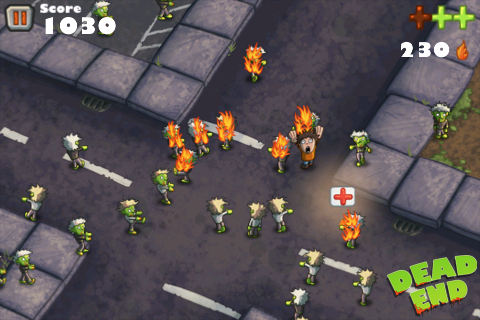
Featured Blog | This community-written post highlights the best of what the game industry has to offer. Read more like it on the Game Developer Blogs or learn how to Submit Your Own Blog Post
(Wrongly) Brushing Aside the Brush
Gameplay is important, but don't neglect the power art has on a player

I've always trended toward function over beauty. I make games to play, so would I rather look at something pretty, or would I prefer that touching a button on a gamepad produce a satisfying result? But I'm realizing that I've been looking through the lens of someone who has mostly made small games, and I'm learning even a small game's art is critical to how it feels.
My art is good, but I don't labor over it to the same extent that most artists do. When making a small little game like Dead End, I care that it's cute and fun and respectable, but I'd much rather you stay for the gameplay. You won't stay for the art, I'm pretty sure. You see art, you might appreciate it, but you move on. Gameplay is more immediately rewarding. I have always worried that, if they knew how I felt about the importance of game art, I would be banished from my own artists' community.
But every time I make some absolute statement like "Art is non-essential next to gameplay", I end up rebuking myself. Every time I say story isn't anything next to gameplay, I have a video chat with Randy Smith in which he makes everything Tiger Style is doing that much more beautiful through the lens of the story and the world behind our next game.
I say all this because there's nothing like making games to force you to eat your own words and ideas of how things should be done. Art isn't important, huh? Well, even when art is just "functional", the emotion it creates in the game is itself a function of an artist's work. It directs the player's approach to the game. So for all my lack of caring deeply about beauty, man I'm starting to care how my games look. In the new Tiger Style game, the beauty is in the details. It's caring about every second you're exploring, you're interacting, you're wondering what's next. My art is hugely important to everything else.
I have been worried about my little game, Dead End, for the past several weeks because one of the missing elements I've been laboring over was the player's run cycle. My game is all about directionality, so going from a single frame that points exactly where you're going to a terrified guy running like a chicken with his head cut off, it means a lot to the player's perception of movement. Suddenly art becomes the most important piece remaining to my game. It's all about the art when I ask if he should be running and his belly should wiggle all about. Art is the deciding factor in how his arms should or shouldn't be waving around. How clear is it to the player what direction you're going, and how clear should it be? I'm still a designer when I answer these questions motivationally, but my execution as the artist is also integral to the success of the movement mechanic.
So now, after laboring over art, the run cycle is in the game and the design dialogue can begin. I can debate (with the help of testers as well) whether or not it is still easy enough to control the main character with a much more vague animated direction. This run cycle has shifted the tone of my game from a man with a gun shooting zombies with cold precision, to a terrified little gardener who only might survive the zombie apocalypse.
The game is getting close. I can feel it in my bones.
Randy is an indie developer, spending most of his time working with Tiger Style Games, but also making some other little projects. Follow him on Twitter!
About the Author(s)
You May Also Like







.jpeg?width=700&auto=webp&quality=80&disable=upscale)








